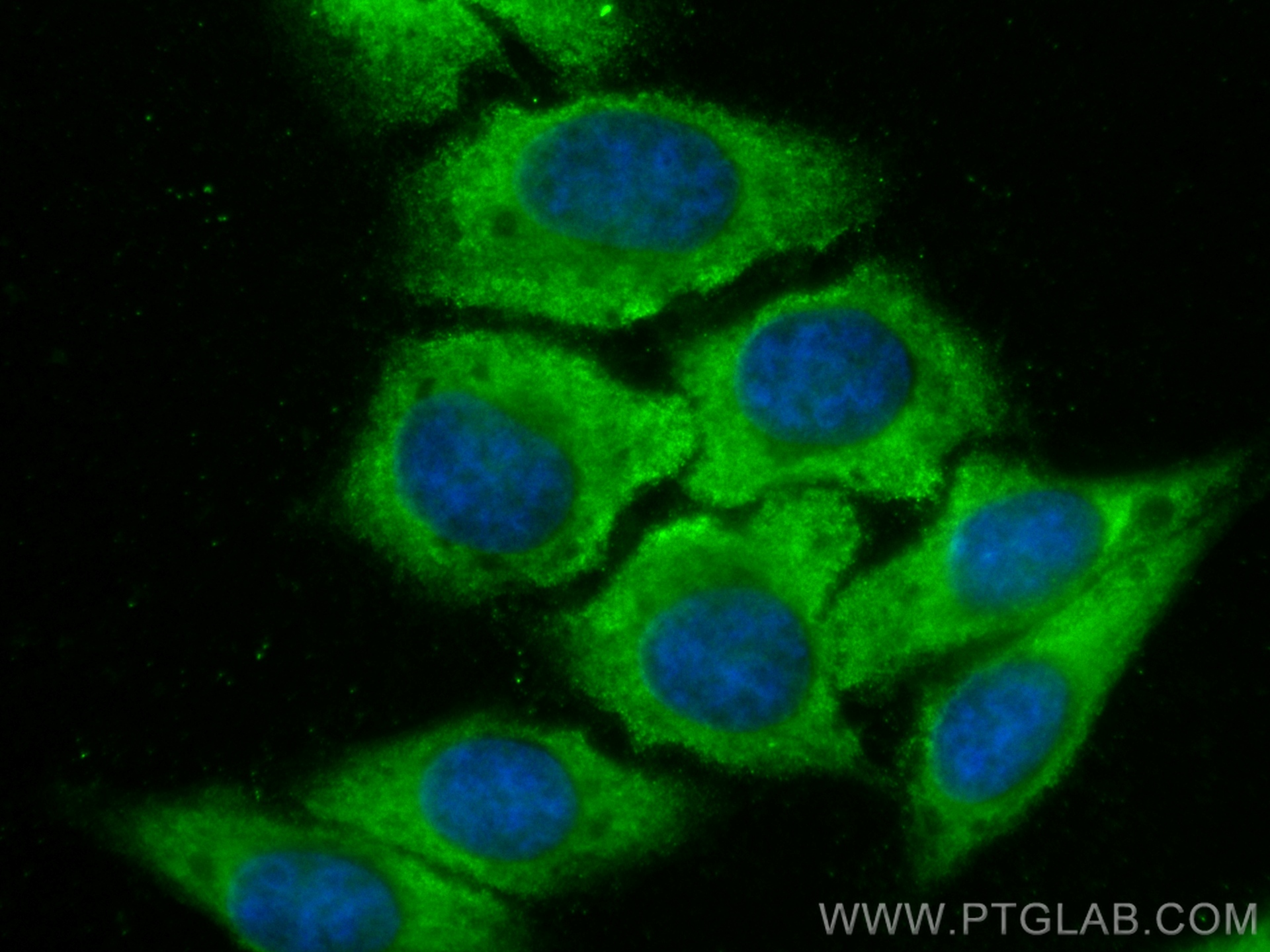验证数据展示
经过测试的应用
| Positive IF/ICC detected in | HepG2 cells |
推荐稀释比
| 应用 | 推荐稀释比 |
|---|---|
| Immunofluorescence (IF)/ICC | IF/ICC : 1:50-1:500 |
| It is recommended that this reagent should be titrated in each testing system to obtain optimal results. | |
| Sample-dependent, Check data in validation data gallery. | |
产品信息
CL488-81479 targets PSAT1 in IF/ICC applications and shows reactivity with human, mouse, pig samples.
| 经测试应用 | IF/ICC Application Description |
| 经测试反应性 | human, mouse, pig |
| 免疫原 |
CatNo: Ag0776 Product name: Recombinant human PSAT1 protein Source: e coli.-derived, PGEX-4T Tag: GST Domain: 1-370 aa of BC004863 Sequence: MDAPRQVVNFGPGPAKLPHSVLLEIQKELLDYKGVGISVLEMSHRSSDFAKIINNTENLVRELLAVPDNYKVIFLQGGGCGQFSAVPLNLIGLKAGRCADYVVTGAWSAKAAEEAKKFGTINIVHPKLGSYTKIPDPSTWNLNPDASYVYYCANETVHGVEFDFIPDVKGAVLVCDMSSNFLSKPVDVSKFGVIFAGAQKNVGSAGVTVVIVRDDLLGFALRECPSVLEYKVQAGNSSLYNTPPCFSIYVMGLVLEWIKNNGGAAAMEKLSSIKSQTIYEIIDNSQGFYVCPVEPQNRSKMNIPFRIGNAKGDDALEKRFLDKALELNMLSLKGHRSVGGIRASLYNAVTIEDVQKLAAFMKKFLEMHQL 种属同源性预测 |
| 宿主/亚型 | Rabbit / IgG |
| 抗体类别 | Recombinant |
| 产品类型 | Antibody |
| 全称 | phosphoserine aminotransferase 1 |
| 别名 | 1O22, EC:2.6.1.52, EPIP, Phosphoserine aminotransferase, PSA |
| 计算分子量 | 40 kDa |
| 观测分子量 | 37-40 kDa |
| GenBank蛋白编号 | BC004863 |
| 基因名称 | PSAT1 |
| Gene ID (NCBI) | 29968 |
| RRID | AB_3084502 |
| 偶联类型 | CoraLite® Plus 488 Fluorescent Dye |
| 最大激发/发射波长 | 493 nm / 522 nm |
| 形式 | Liquid |
| 纯化方式 | Protein A purification |
| UNIPROT ID | Q9Y617 |
| 储存缓冲液 | PBS with 50% glycerol, 0.05% Proclin300, 0.5% BSA, pH 7.3. |
| 储存条件 | Store at -20°C. Avoid exposure to light. Stable for one year after shipment. Aliquoting is unnecessary for -20oC storage. |
背景介绍
PSAT1, also named as PSA and PSAT, belongs to the class-V pyridoxal-phosphate-dependent aminotransferase family and SerC subfamily. It catalyzes the reversible conversion of 3-phosphohydroxypyruvate to phosphoserine and of 3-hydroxy-2-oxo-4-phosphonooxybutanoate to phosphohydroxythreonine. PSAT1 represents a new interesting target for CRC therapy. It may be implicated in altered serine metabolism and schizophrenia spectrum conditions. (PMID: 18221502, 20955740)
实验方案
| Product Specific Protocols | |
|---|---|
| IF protocol for CL Plus 488 PSAT1 antibody CL488-81479 | Download protocol |
| Standard Protocols | |
|---|---|
| Click here to view our Standard Protocols |


